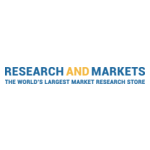DUBLIN–(BUSINESS WIRE)–The “Food Safety Testing Market by Target Tested, Technology (Traditional and Rapid), Food Tested (Meat, Poultry, Seafood, Dairy, Processed Foods, Fruits & Vegetables, and Cereals & Grains) and Region – Global Forecast to 2027” report has been added to ResearchAndMarkets.com’s offering.
The market for Food safety testing is estimated at USD 21.1 Billion in 2022; it is projected to grow at a CAGR of 8.1% to reach USD 31.1 Billion by 2027. The market for food safety testing is stridden with the increasing domestic demand/consumption of food products that would need food safety certification to meet regulatory compliances and with the increasing food trade across the globe has increased the demand for food safety testing globally to reduce the risk of foodborne outbreak and illness and prevent food fraud.
Food safety testing is a scientifically based method to determine food safety based on its microbiological, physical, or chemical composition. Food safety testing needs to be accurate, and definite. Food safety testing helps to address the world’s growing demand for safer food and the sustainability of the food supply. Every year, food safety issues cause economic losses in countries all across the world. It has been estimated that low to middle-income countries suffers at least USD 100 billion in losses per year due to foodborne illnesses. There is a need for access to a clean, safe, and sustainable food supply for human consumption.
The Fruit and vegetable segment by food tested is projected to observe the second-highest CAGR in the food safety testing market throughout the forecasted period
Fruits & vegetables naturally carry non-pathogenic microorganisms. However, during their growth, harvesting, transportation, further processing, and handling, they can be contaminated by pathogens, pesticides, and GMOs. The main reason for the contamination is the pesticide residue on fruits and vegetables. Hence, their market is estimated to observe growth in pesticide residue testing in the near future.
The GMOS segment by target tested is projected to account for the highest CAGR in the global food safety testing market
The market for GM food safety testing has been driven by the emergence of GM crops and the usage of GMO ingredients by multinational companies with extensive reach. Genetically modified crops are increasingly gaining acceptance and their adoption has brought huge economic and environmental benefits. In the past 17 years, these achievements have been primarily supported by two simple traits of herbicide tolerant and insect resistant crops.
The PCR-based testing, by Rapid technology, is projected to attain the fastest market growth in the food safety testing market throughout the forecasted period
Today, a range of pathogens can be analyzed with rapid PCR systems, depending on the individual system. These include Salmonella spp., Listeria spp., Listeria monocytogenes, Campylobacter jejuni, Cryptosporidium parvum, E. coli O157 and E. coli O157:H7. Additionally, PCR tests can detect spoilage organisms in beer and can qualitatively and quantitatively detect genetically modified organisms (GMOs) in soy and maize, as well as used for general GMO screening of other food types. Hence, it has gained a wide acceptance across the food industry and therefore supported the growth of food safety testing market.
Market Dynamics
Drivers
- Cross-Contamination of Food Products due to Complex Processes
- Stringent Food Safety Regulations
- Availability of Advanced Rapid Technology
- Increase in Demand for Convenience and Packaged Food Products
- Rising Food Recalls due to Non-Compliant Food Products
- Rise in Consumer Awareness About Food Safety
Restraints
- Lack of Coordination Between Market Stakeholders and Improper Enforcement of Regulatory Laws and Supporting Infrastructure
- Complexity in Testing Techniques
- Difficulties in Detection of Unknown Adulterants by Chemical Tests
- Varying Test Results with Test Methods
Opportunities
- Technological Advancements in Testing Industry
- Spike in Food Safety Concerns After COVID-19
Challenges
- Lack of Harmonization of Food Safety Standards
- High Cost Associated with Procurement of Food Safety Testing Equipment
Key Topics Covered:
1 Introduction
2 Research Methodology
3 Executive Summary
4 Premium Insights
5 Market Overview
6 Industry Trends
7 Regulations for Food Safety Testing Market
8 Food Safety Testing Market, by Target Tested
9 Food Safety Testing Market, by Food Tested
10 Food Safety Testing Market, by Technology
11 Food Safety Testing Market, by Region
12 Competitive Landscape
13 Company Profiles
14 Adjacent and Related Markets
15 Appendix
Companies Mentioned
- AGQ Labs Usa
- Agrolab GmbH
- ALS Limited
- Asurequality
- Bureau Veritas
- Campden Bri
- Certified Laboratories
- Cotecna Inspection Sa
- Daane Labs
- Element Materials Technology
- Eurofins Scientific
- Foodchain Id
- IFP Institut Fur Produktqualitat GmbH
- Intertek Group plc
- Microbac Laboratories, Inc.
- Mitra Sk Private Limited
- Merieux Nutrisciences Corporation
- Neogen Corporation
- Nova Biologicals
- R J Hill Laboratories Limited
- Romer Labs
- SGS SA
- Symbio Laboratories
- Tuv Nord Group
- Tuv Sud
For more information about this report visit https://www.researchandmarkets.com/r/ha9ldm
Contacts
ResearchAndMarkets.com
Laura Wood, Senior Press Manager
press@researchandmarkets.com
For E.S.T Office Hours Call 1-917-300-0470
For U.S./ CAN Toll Free Call 1-800-526-8630
For GMT Office Hours Call +353-1-416-8900



